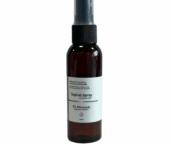Minoxidil is a relatively safe and well-tolerated medication. Most individuals don’t experience any side effects.
However, topical Minoxidil may cause potential side effects. The side effects of Minoxidil include:
- Initial hair shedding – during the first few weeks of use
- Scalp irritation – dryness, itching or burning
- Contact dermatitis
- Unwanted hair growth
As topical Minoxidil solution is applied directly to the scalp, it is less likely to cause serious side effects.
Oral Minoxidil may cause the following side effects:
- Nausea
- Vomiting
- Headaches
- Serious side effects include:
- Hypertrichosis (excess hair growth)
- Increased heart rate
- Sudden weight gain
If you experience any serious effects, contact your healthcare provider right away.
Some individuals may have an allergic reaction after taking topical or oral Minoxidil treatment. If you experience a skin rash, swelling, dizziness, or have difficulty breathing or swallowing, stop the medication and seek medical assistance immediately.




